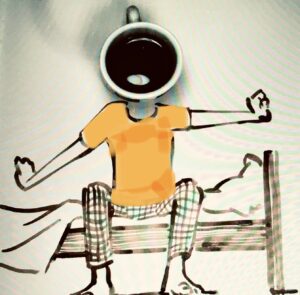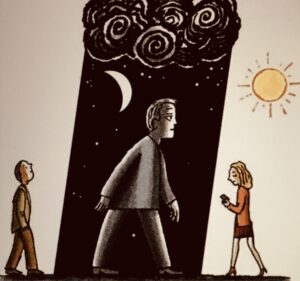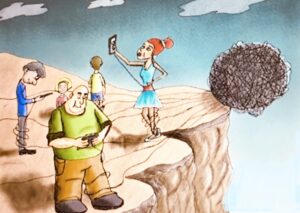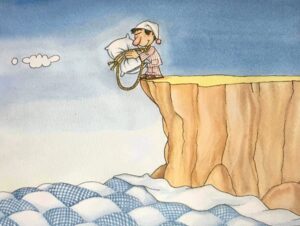News 2025

How To Feel 20 Years Younger
“The important saying in brain health: “Use it or lose it.”
“Minimizing the amount of time you spend sitting or being inactive.
Oral hygiene is essential for preventing infections and gum disease.
Cardiologist Eric Topol has the formula for that:
Strengthen your immune system
The healthy aging is a function of a strong immune system, which can defend against diabetes, cancer, heart disease and other chronic conditions.
- Regular strength and resistance training builds strong immune systems and is the single best way to extend lifespan and, importantly, health span.
- Keep a Mediterranean-style diet that maximizes whole foods, colorful vegetables, lean meats, and say no to the ultra-processed food.
- Get deep, restorative sleep — crucial for supporting your body’s immune function.
- Maintain so-called “lifestyle+” factors, like spending time in nature, avoiding environmental pollution like food-borne plastics and airborne toxins.
Nourish your “gut-brain axis”
Gut hormones are chemical messengers made by special cells in the digestive tract that help control digestive functions. They communicate with the brain through the bloodstream and the vagus nerve, which runs through the throat and vocal cords and connects the gut and brain.
“Because the gut hormones talk to the immune system, and they talk to the brain, which is mission control for the immune system.”
Here’s how to nourish the two-way communication along the so-called gut-brain axis:
- Maintain a strong and diverse gut microbiome: Consume a variety of whole foods (meat, grains, legumes, dark leafy greens), and say no to the ultra-processed foods (i.e., anything with a long list of ingredients you can’t pronounce). Foods with active macrobiotic cultures like yogurt are great for building healthy, diverse gut bacteria.
-
- Stimulate and strengthen your vagus nerve. Care for it via deep-breathing exercises that engage the diaphragm. Singing, humming, laughing and even gargling stimulate the vagus nerve, and cold-water exposure can activate it and enhance its tone.
Don’t Sleep too little — or too much
For people in their late 30s and older, getting more than seven to eight hours of sleep was associated with greater mortality risks. “The principal finding was that about seven hours is the optimal duration of sleep.” Topol recommends maintaining a consistent bedtime and waking schedule, and avoiding eating or drinking alcohol for a few hours before sleep.
Constant learning makes your mind sharp.”
Mental activity is essential for maintaining a healthy brain. Learning languages is one of the best mental activities for the brain. It brings joy and happiness too; you could find out about new cultures that is very fulfilling.
Source: LA Times
The Uninvited Guests

Trillions of microbes live inside us. The microbiome has a far greater impact on human health and development than previously thought.
“Microbes that gobble up or break down environmental toxins can clean up oil spills, waste sites, and contaminated watersheds. But until his faculty mentor asked him for help with a project he was working on with doctors at Boston Children’s Hospital in 2009, Eric Alm had not thought much about their role in a very different environment: the human digestive system.
Professor Schauer, was examining how microorganisms in the gut might be linked to inflammatory bowel disease (IBD), and he hoped advanced statistical analysis of the data he was collecting could make those connections clearer. Alm, who’d joined the civil and environmental engineering faculty in 2006 as a computational biologist studying environmental uses of microbes, had the statistical experience needed and could apply machine-learning tools to help. But for him, the project was supposed to be a brief detour.
The community of trillions of symbiotic microbes that reside in the gut—might play a key role in human health. Few serious research programs existed to study this idea.
“It was really this undiscovered territory, a lot of diseases where there seemed to be things that we couldn’t explain, a lot of people thought maybe the microbiome plays a role either directly or indirectly.” MIT Technology Review
The factors that protect mental health
- A sense of purpose in life
- Brain activities: regular engagement in mentally stimulating tasks
- A diet high in vegetables, fruit, dairy, fish and nuts
- Moderate or high levels of physical exercise
- Low alcohol intake

The factors that increase the risk
- High blood pressure
- High body mass index
- High blood sugar
- High cholesterol
- Depressive symptoms
- A diet high in sugar-sweetened beverages, sweets and sodium
- Hearing loss
- Kidney disease
- Pain
- Sleep disturbances or sleep periods longer than eight hours
- Smoking
- Stressful life events
NY Magazine
To Improve Your Gut Microbiome,
Spend More Time in Nature

Spend your time in nature as much as possible & take medications as little as possible
Microbes found in green spaces can transfer into your body, increasing bacterial diversity and potentially boosting the strength of the immune system.
“MICROBES IN OUR gut can have a profound impact on our health, but research is showing that those surrounding us in our environment—what’s known as the natural environmental microbiome—can have a big impact too. This suggests that we should all spend a lot more time interacting with nature, both outdoors and indoors.
Professor Gretchen Daily from Stanford University, mentioned a Finnish research project that showed how letting kindergarten-aged children play in a yard that contained “dirt” from the forest floor resulted in a significant positive impact on their gut microbiome. Seventy-nine young children took part, all living in urban environments and spending the majority of their days at different daycare centers around Finland. The only difference between them was that these daycare centers had three different types of outdoor spaces.
The children were encouraged to play in only one of the three types of yard each day over the 28 days of the experiment (note that some kindergartens have multiple play areas). Before and after periods of play, the children’s skin and gut microbiota were measured using genetic sequencing of bacteria taken from skin swabs and stool samples, along with changes to T cells and cytokines in their blood. These cells and proteins play a critical role in preventing autoimmunity and autoimmune diseases; their levels are often used as an indication of how well the immune system is functioning.
Remarkable results emerged. The children who played in the experimental yard showed a large increase in the diversity of microbiota on their skin and in their gut in comparison to the children playing in the urban and nature-orientated areas. Importantly, these were the “good” types of microbiota—those associated with health benefits. There was also a significant increase in the children’s immunity markers, indicative of them having gained enhanced immunoregulatory pathways—which is indicative of a reduced risk of immune-mediated diseases such as inflammatory bowel disease and rheumatoid arthritis.” Wired
Read the latest 2025 News on the following link:
https://ctrtranslation.com/media-american-francais-italiano-espanol/
AI can now create a replica of your personality

A two-hour interview is enough to accurately capture your values and preferences, according to new research from Stanford and Google DeepMind.
“Imagine sitting down with an AI model for a spoken two-hour interview. A friendly voice guides you through a conversation that ranges from your childhood, your formative memories, and your career to your thoughts on immigration policy. Not long after, a virtual replica of you is able to embody your values and preferences with stunning accuracy.
That’s now possible, according to a new paper from a team including researchers from Stanford and Google DeepMind, which has recently been published.
Led by Park, a Stanford PhD student in computer science, the team recruited 1,000 people who varied by age, gender, race, region, education, and political ideology. They were paid up to $100 for their participation. From interviews with them, the team created agent replicas of those individuals. As a test of how well the agents mimicked their human counterparts, participants did a series of personality tests, social surveys, and logic games, twice each, two weeks apart; then the agents completed the same exercises. The results were 85% similar.
“If you can have a bunch of small ‘yous’ running around and actually making the decisions that you would have made—that, I think, is ultimately the future,” Park says.
In the paper the replicas are called simulation agents, and the impetus for creating them is to make it easier for researchers in social sciences and other fields to conduct studies that would be expensive, impractical, or unethical to do with real human subjects. If you can create AI models that behave like real people, the thinking goes, you can use them to test everything from how well interventions on social media combat misinformation to what behaviors cause traffic jams.
Such simulation agents are slightly different from the agents that are dominating the work of leading AI companies today. Called tool-based agents, those are models built to do things for you, not converse with you. For example, they might enter data, retrieve information you have stored somewhere, or—someday—book travel for you and schedule appointments.
The two types of agents are different but share common ground. Research on simulation agents, like the ones in this paper, is likely to lead to stronger AI agents overall, says John Horton, an associate professor of information technologies at the MIT Sloan School of Management.
“This paper is showing how you can do a kind of hybrid: use real humans to generate personas which can then be used programmatically/in-simulation in ways you could not with real humans,” he told MIT Technology Review in an email.
The research comes with caveats, not the least of which is the danger that it points to. Just as image generation technology has made it easy to create harmful deepfakes of people without their consent, any agent generation technology raises questions about the ease with which people can build tools to personify others online, saying or authorizing things they didn’t intend to say.
The evaluation methods the team used to test how well the AI agents replicated their corresponding humans were also fairly basic. These included the General Social Survey—which collects information on one’s demographics, happiness, behaviors, and more—and assessments of the Big Five personality traits: openness to experience, conscientiousness, extroversion, agreeableness, and neuroticism. Such tests are commonly used in social science research but don’t pretend to capture all the unique details that make us ourselves. The AI agents were also worse at replicating the humans in behavioral tests like the “dictator game,” which is meant to illuminate how participants consider values such as fairness.
To build an AI agent that replicates people well, the researchers needed ways to distill our uniqueness into language AI models can understand. They chose qualitative interviews to do just that.
Interviews aren’t the only option, though. Companies that offer to make “digital twins” of users can have their AI models ingest customer emails or other data. It tends to take a pretty large data set to replicate someone’s personality that way.”
MIT Technology Review
Mockery of Art
A nouveau rich recently bought a 35 cents banana for $6.2 million at Southey’s contemporary art auction.

The banana that was duct-taped onto the wall was a conceptual (so called) art by a noted prankster came with a certificate of authenticity in the prestigious auction house. The bidding started at $800,000 and after five minutes, a nouveau rich, a Chinese-born crypto entrepreneur besting the other offers and bought it for $6.2 million!
It is a mockery of Art that a nouveau rich that has gained a huge amount of money in the crypto, to pay $6.2 million for a 35 cents banana as a show of power and wealth just to have a five minutes fun during the bidding in a world class auction.
When the social media such as TikTok cheapening the people’s taste, some people might find such a contemporary art auction amusing.
Big Tech’s Quest for Longevity

“There are a lot of charlatans in aging research. I should be careful in what I say, but it attracts pretty quirky people,” says Dr Gary, a mouse geneticist at the Jackson Laboratory.”
“Bill Maris, the former head of Google Ventures who hatched the idea for Calico, has said he thinks it is possible people could live “for 500 years.” That’s what the critics called very unlikely.”
“At a laboratory outside San Francisco, money from the founders of Google maintains a large number of naked mole rats. The hairless rodents require exacting, expensive conditions to thrive: they live in cooperative colonies like ants, led by a queen rat. But what is truly extraordinary is that they can live about 30 years—10 times longer than a mouse.
The rodents belong to Calico Labs, short for the California Life Company. In 2013, the cofounder of Google, Larry Page, announced that his company would form Calico and fund it lavishly to carry out a long-term project, trying to sort out the causes of aging and do something about them. The company’s mission: to build a Bell Labs of aging research. It hoped to extend the human life span by coming up with a breakthrough.
MIT Technology Review has learned that Calico is, in effect, an elite university research group housed within a corporate bunker, doing mostly basic science. It has more than 100 employees and has assembled a Noah’s ark of yeast, worms, and more exotic creatures like the naked mole rats, which are kept at the Buck Institute for Research on Aging, about 30 miles from Calico’s South San Francisco headquarters.
The Google founders aren’t the first billionaires to decide that aging is the “most fundamental unsolved problem in biology,” as Calico’s press releases put it. Larry Ellison, the cofounder of Oracle, gave away $335 million to scientists studying aging before redirecting his foundation’s grants toward eliminating polio in 2013. The investor Peter Thiel has also donated to the anti-aging cause, and there’s even a $500,000 Palo Alto Longevity Prize to anyone who can radically extend the life of a mammal.
Calico is exactly what Google intended: a Bell Labs working on fundamental questions, with the best experts , the best technology, and the most money. “Instead of ideas chasing the money, they have given us a very handsome sum of money and want us to do something about the fact that we know so little about aging,” says Dr Botstein. “It’s a hard problem; it’s an unmet need; it is exactly what Larry Page thinks it is. It’s something to which no one is really in a position to pay enough attention, until maybe us.”
Calico is ratcheting up its expertise and skills. Botstein says it has demonstrated it could decode a human genome from scratch, without peeking at the official genome map. That’s a difficult task requiring significant investment in computing and know-how. But Calico got the right answer, so it’s confident of accurately mapping the genome of the naked mole rat—a job he says is half done. And a precise understanding of how the mole rat’s genes are organized may hold clues to its long life. “A lot of what we do is technology development,” says Botstein. “It’s not interesting, and it’s not supposed to be interesting. It’s how you put one foot in front of the other so you don’t trip on yourself.”
Big disappointment
To some, Calico’s heavy bet on basic biology is a wrong turn. The company is “my biggest disappointment right now,” says Aubrey de Grey, an influential proponent of attempts to intervene in the aging process and chief science officer of the SENS Research Foundation, a charity an hour’s drive from Calico that promotes rejuvenation technology. It is being driven, he complains, “by the assomption that we still do not understand aging well enough to have a chance to develop therapies.”
This year, Jeff Bezos joined investors who put $127 million behind Unity, a startup in San Francisco that’s developing drugs to zap older, “senescent” cells that have stopped dividing.
These cells are suspected of releasing cocktails of unhelpful old-age signals, and by killing them, Unity’s drugs could act to rejuvenate tissues. The company plans to start with a modestly ambitious test in arthritic knees. De Grey’s SENS Foundation, for its part, has funded Oisin Biotechnologies, a startup aiming to rid bodies of senescent cells using gene therapy.
The experimental trial is designed to involve 6,000 people and would last six years. It would be the first large study of a geroprotector in volunteers, according to S. Jay Olshansky, a public health researcher at the University of Illinois at Chicago. He therefore rates the trial as significant no matter whether it flops or, as he hopes, sets off “the most groundbreaking events in public health in this century.”
There are a lot of charlatans in aging research. I should be careful in what I say, but it attracts pretty quirky people,” says Dr Gary, a mouse geneticist at the Jackson Laboratory. It can’t help, either, that the people who bankroll this science keep saying they hope to live forever. Bill Maris, the former head of Google Ventures who hatched the idea for Calico, has said he thinks it is possible people could live “for 500 years.” That’s pretty unlikely.” MIT Technology Review
California lost $1.2 billion to cryptocurrency scams in 2023
According to a report from the FBI, California lost a staggering $1.2 billion to cryptocurrency scams in 2023 — the most out of any state in the nation — followed by Texas and Florida.

“It’s no secret that California is one of the richest regions in America. As of March 2024, it had the most billionaires in the nation, and as of 2020, the San Jose-Sunnyvale-Santa Clara region had the highest number of millionaire households out of all U.S. metros. But, as it turns out, scammers are also taking advantage of this free-flowing wealth.
According to a report released this month by the FBI, California lost a staggering $1.1 billion to cryptocurrency scams last year — the most of any state in the nation — followed by Texas and Florida. The report highlighted investment scams, and victims’ “fear of missing out” on the cryptocurrency phenomenon. Like the name implies, investment scams ultimately convince people to transfer funds into fraudulent websites with the promise that they’ll make more money. Scammers will often describe themselves as “investment managers” or act like they’re romantically interested in the victim; sometimes, they’ll even impersonate celebrities. As a result, in 2023, there were 9,500 complaints in California regarding fraud, the FBI report shows, about twice as many as Florida or Texas. For now, it’s unclear why these schemes keep taking hold in the Golden State.
“It could be a number of things, such as the amount of crypto investors per capita, or California residents’ proximity to emerging technology, or a geographical knowledge of how to report that a scam/fraud has occurred,” the FBI’s San Francisco office told SFGATE.
According to the state Department of Financial Protection & Innovation, residents are continuing to fall prey to a variety of these elaborate traps.
“We can say that the issue has grown in recent years and the DFPI is monitoring and responding to complaints and illicit activity,” Mark Leyes, the department’s spokesperson, told SFGATE.
Though names and dates aren’t listed, there are more than 200 complaints about crypto fraud filed on DFPI’s website. While many complainants reportedly lost hundreds of thousands of dollars, several “invested” — and ultimately lost — millions in so-called “pig butchering” schemes: operations where scammers reach out to people via social media and dating apps, establish trust with them, and eventually introduce them to so-called investment opportunities. Once the person transfers funds into a seemingly legitimate website, it falsely reflects a bigger account balance to keep the person engaged. But, as many of the complaints show, once the money is “invested,” it can’t be taken out.”
SFGate
Social media platforms engaged in ‘vast surveillance’ and failed to protect young people, FTC finds
“Major social media platforms and video streaming services that gather a “staggering” amount of data from its users have failed to protect young people and safeguard online privacy, the Federal Trade Commission said recently.

“These surveillance practices can endanger people’s privacy, threaten their freedoms, and expose them to a host of harms, from identify theft to stalking,” FTC Chair said in a statement. “Several firms’ failure to adequately protect kids and teens online is especially troubling.”
The agency, which is focused on protecting consumers and enforcing antitrust law, released a 129-page report that analyzes how some of the world’s largest social media platforms including Instagram, TikTok and YouTube collect and use vast troves of data they gather from users. The findings highlight the mounting scrutiny online platforms face from regulators and lawmakers seeking to combat technology’s potential harms as they become more deeply intertwined with people’s daily lives.” LA Times
Study identifies five different ways of aging thanks to data from 50,000 brain scans

The number of neurons grows from before birth until a maximum of six years of age, and begins to descend from there. Our number of cerebral connections continues to grow until 29 years of age and slowly reduces until a person is in their 50s. From then on, the loss of connections accelerates.
Some aspects of the aging of brain, which has a greater impact beginning in the 40s, can be combated with exercise, which has anti-inflammatory effects, and other neuroprotective treatments customized to a specific pattern of brain aging.
“Recently, a team of scientists led by Christos Davatzikos of the University of Pennsylvania published a study in Nature Medicine that identifies the different ways in which our brain deteriorates with the passage of time, pointing the way to a more individualized method for measuring the aging process. Researchers analyzed 50,000 brain scans that revealed five different forms of cerebral atrophy associated with aging and the appearance of neurodegenerative illnesses. Although the human eye is unable to detect the subtle variations between the five patterns, scientists were able to identify them using machine learning technology. The study’s authors trained an algorithm by showing it scans from 1,150 healthy individuals between the ages of 20 and 50, and of nearly 9,000 people total in that age range, both with and without cognitive decline.
El Pais
Alain Delon passed away on Sunday August 18, 2024. He was 88 years old.
Mort d’Alain Delon : Delon décédé dimanche 18 août à l’âge de 88 ans

Le comédien, décédé ce dimanche à 88 ans, avait confié au « Point » combien il était impressionné par « le Patron », rencontré pour la première fois en 1962 pour « Mélodie en sous-sol ».
C’était en 2013, dans les bureaux d’Alain Delon avenue de Messine (Paris, 8e). Sur la table basse, il n’y a qu’un seul livre : des portraits de Romy Schneider. Aux murs, des affiches de Plein Soleil et du Samouraï côtoient des œuvres d’art. Ému de parler de « mon Jean », Delon ne tient pas en place. Il tournoie dans la pièce, entame une réponse, s’interrompt pour évoquer ses débuts au cinéma : « J’avais la gueule que j’avais, j’étais pas mal. »
Parler de Gabin, il le souhaite plus que tout, et pourtant cela ne va pas de soi. Soudain, il se décide : « Je veux vous prêter quelque chose, un de mes souvenirs les plus chers. » Il revient avec une photo de tournage du Clan des Siciliens dont la sobre dédicace – « Pour toi Alain, en souvenir du Vieux » – lui embue le regard. Alors seulement il se cale dans un canapé pour me répondre. Parfois, la voix lui manque, surtout quand il évoque la mort de Gabin, et la cérémonie d’adieu en mer.
Plus tard, Delon laisse un long message sur mon répondeur. Il y dit son bonheur de retrouver « le Vieux » dans les pages du hors-série Gabin du Point, son admiration éperdue pour ce qui « n’est pas une carrière, ce n’est pas le bon mot, c’est une vie, une vie de cinéma ». À la fin de sa tirade, il précise : « C’était Alain. » Silence. « Delon. » L’hommage est signé.
Cet entretien, le monstre sacré du cinéma nous l’a accordé dans le cadre de la publication, en 2014, par Le Pointd’un hors-série sur son idole. Un très bel hommage rendu à un autre grand nom du cinéma français. » Le Point
Synchronization between the body’s circadian clocks can prevent aging
“An experiment in mice reveals that a lack of coordination between the brain’s central timekeeper and the muscle’s molecular clock accelerates muscle tissue dysfunction. Reestablishing these communication networks helps restore proper functioning.”
“Night and day are not the same, not for the eyes, the liver, the skin or the pancreas.”

“The peripheral clocks — located in organs and tissues — receive this instruction from the central chronometer and regulate themselves to set in motion one function or another, depending on the time of day.”
“The deregulation of our clock is one of the clear characteristics that happens to all of us as we age. What we saw during aging is that the clock machinery, the basic one, the one that tells the tissue that it is this time or that time, that does not change. So if we wanted to find possible therapeutic ways to keep the clock in a young state in the old organism, we had to understand what happens to the clock.”
“The communication between the brain clock and the skin clock — are a step forward in understanding how these precise molecular devices work.”
“Human life is governed by a circadian rhythm (around 24 hours) that is controlled by a tiny biological clock located in the brain. Based on the light stimuli entering through the retina, this molecular device synchronizes itself and tells the rest of the organism the time so that it can act accordingly. Night and day are not the same, not for the eyes, the liver, the skin or the pancreas. The peripheral clocks — located in organs and tissues — receive this instruction from the central chronometer and regulate themselves to set in motion one function or another, depending on the time of day. Like a kind of orchestra in tune, all these molecular instruments that manage the circadian rhythms communicate, interact and work, in turn, with the necessary autonomy to make the organism function. This is how the gears of life work.
To read the full article, click on the following link:
https://ctrtranslation.com/media-american-francais-italiano-espanol/
Turquoise, the Color of Lung Health Awareness

An initiative by the American Lung Association made the nation turn turquoise as a part of the annual Lung Cancer Action Week. NYC bridge and hundreds of iconic buildings illuminated turquoise in the honor of the Lung Health Week. Participating states including Arizona, Indiana , Louisiana, Missouri, Nebraska, New Hampshire, Oklahoma, Pennsylvania and Rhodesia Island. Well done!
Lung Cancer is the leading cause of cancer deaths in the United States. According to the ALA, hazardous air quality due to the particle pollution and motor vehicle emissions affecting 131 million people who are living in the polluted areas. Repeated exposures to the fumes, chemicals and dust is very harmful to the lung. The simplest things that people can do is driving less, avoiding chemicals whenever they can and dusting the places of living.
You can visit the website lungforce.org to get involved in the American Lung Association’s Lung Force Initiatives. Don’t forget the awareness of the lung health by the color of the sky and the ocean: Turquoise.
Addictions Hijack the Brain : from alcohol and tobacco, to junk food or digital content
The algorithms are addictive. Who invented infinite scrolling? That’s addictive. The algorithms are a dopamine laboratory, which studies how to make these social media platforms more addictive.
Rubén Baler, neuroscientist: ‘We are guinea pigs. Our attention has become a profitable commodity’
He warns that overexposure to screens from an early age can have a negative impact on health.

“Addictions hijack the brain, subduing it until it gives up on its most basic needs. Even eating and drinking — essential for sustaining life — are no longer priorities. But that substance or behavior that generates such brain dysfunction is usually just the symptom of a deeper phenomenon… the tip of the iceberg of a complex network of vulnerability and poor mental health.
Rubén Baler agrees with this assessment. He’s an expert in public health and addiction neuroscience at the United States National Institute on Drug Abuse (NIDA): “We need to worry about what’s important, not just about what’s urgent,” the neuroscientist warns. It’s not about the substances, but rather the phenomenon behind them. He assures EL PAÍS that there are hidden interests and hands that pull the strings of the dynamics that are harmful to public health. From alcohol and tobacco, to junk food or digital content, “there are increasingly powerful forces that have an interest in these products becoming more and more addictive and popular,” the neuroscientist affirms.
To read the full article, click on the following link:
https://ctrtranslation.com/media-american-francais-italiano-espanol/
The emotional and spiritual effects of colors
Yellow furniture and decoration: Why not?
According to Goethe, yellow is associated with warm, joy and light.
“When applied to an interior, yellow is considered to be a great way to highlight a place, give it importance, draw the eye to it and emphasize that particular spot.”

“Oh, were you one of those who thought that yellow was a cursed color, a color to be avoided at all costs? Well, that’s not true. Some people are so superstitious and negative and disapproving yellow. The legend, Moliére died on stage wearing that color. Update your perspective: yellow has arrived as one of the season’s decor trends, and it is fresh, unadulterated, and resounding; there’s no hint of shyness or any intention of hiding. In his Theory of Colours (1810), the German scholar Goethe discussed the psychological and symbolic aspects of colors at length, including yellow, which he associated with warmth, joy, and light.
To read the full article, click on the following link:
https://ctrtranslation.com/media-american-francais-italiano-espanol/
Are we getting tired of the selfie?
The surprising return of analog cameras
We’re seeing a recovery of the nostalgic, natural image
Researchers at the Boston Medical Center speak of “selfie dysmorphia,” referring to the disorder suffered by those who undergo plastic surgery with the purpose of looking like the version of themselves they see with social media filters.
We are tired of not being able to believe what we see, of being bombarded with messages that are not real and that generate toxic feelings for no reason.

“A generation used to unlimited access to information and tools is recovering the charm of objects that invite the opposite of smartphone’s immediacy. Interest in old-fashioned film cameras is increasing, especially for those whose childhoods are documented on film. “We take a lot of photos that last only until we change phones. But almost all of us keep albums from when we were little that are memories of our lives, places to return to and revisit,” say Cristóbal Benavente and Marta Arquero, managers of the Sales de Plata store, a stop for lovers of analog photography.”
To read the full article, click on the following link:
https://ctrtranslation.com/media-american-francais-italiano-espanol/
The dark web’s two faces:
Charity fundraisers alongside extortion and kidnapping
“The well-known web we access daily through popular browsers represents just 5% of the internet. It’s just the surface of the deep web ocean of information that is intentionally hidden or not meant to be easily accessed.”
“90 million cyber attacks worldwide, costing $11.5 billion »
Internet criminals, responsible for 84% of global scams, uphold codes of conduct and an arbitration system to govern their society

“The dark web harbors a wide range of sinister activities like murder for hire, weapons and illegal drugs for sale, distribution of child pornography, as well as robbery, kidnapping, extortion and infrastructure sabotage. It represents the most nefarious recesses of the internet. Yet even this criminal realm lives by a set of norms and rules. “They have their own code, although we must never forget that they are criminals,” said Sergey Shaykevich, director of Check Point Software’s Threat Group during CPX Vienna cybersecurity summit. “84% of all scams happen online,” said Juan Salom Clotet, chief of Spain’s Cybersecurity Coordination Unit (Civil Guard). This same dark web organizes charity fundraisers, celebrates holidays, disciplines inappropriate behavior and has its own “judicial system.”
The well-known web we access daily through popular browsers represents just 5% of the internet. It’s just the surface of the deep web ocean of information that is intentionally hidden or not meant to be easily accessed. Kaspersky security researcher Marc Rivero said, “The deep web covers anything not picked up by regular search engines, like sites needing logins and private material. On the other hand, the dark web- a slice of the deep web – is all about using hidden networks to keep users and sites anonymous. It’s commonly associated with illegal activity.”
EL PAÍS
To read the full article, click on the following link:
https://ctrtranslation.com/media-american-francais-italiano-espanol/
Main Key to Happiness: Willpower
Those who understand the importance of making efforts will build up strong self-esteem and will be able to overcome the bumps that come their way
“Efforts and perseverances should become the backbone of the education.”

“We live in a society where achieving anything appears easy. Where everything seems affordable, and people can get everything they want with a click of a mouse. Where we seek instant reward but talk little about error, frustration or effort. This misunderstood success leads one to think that we can achieve things without putting our soul into it, and that strokes of luck determine what one is capable of achieving or not. For families, when raising a child, effort and perseverance should become the backbone of their education. Teach them that their success in life will not depend on their ability to accumulate content or procedures, but rather on their ability to work hard and not give up when things get complicated.”
To read the full article, click on the following link:
https://ctrtranslation.com/media-american-francais-italiano-espanol/
We cannot normalize having 10-year-old children working as influencers:
The challenge of controlling underage content creators
The problem is linking happiness to that idealized physical image, as that only leads to frustration.
Psychologist Lorena González: “We cannot normalize having 10-year-old children working as influencers. It should be penalized…Children learn what we teach them. We are their role models. If parents normalize this online overexposure, then this will be normal for them, although we still do not know the consequences.”

“Some of the influencer children of the Alpha generation — those born after 2010 — have more millions in the bank than years of age. They have acquired world fame on platforms like TikTok because they speak, make themselves up and dance just like the influencers they have been mimicking all of their lives.
One recent example are the so-called Sephora kids: this trend has filled the social networks with videos featuring hundreds of 10-year-old girls who get their hands on as many of the brand’s makeup products as they can to do skin care routines for their followers.
To read the full article, click on the following link:
https://ctrtranslation.com/media-american-francais-italiano-espanol/
Youth, AI, Cryptocurrency and Greed
“Cyberattacks cost the world $945 billion a year.”
« Around the planet, crime is rising and the “bad guys” are ahead when it comes to cutting-edge technology. Financial institutions are the main target and geopolitics has become a process of extracting money, creating misery and jeopardizing the future. »
“Beyond the monetary damage, financial crimes affect human dignity.”

“Despite the official story, artificial intelligence (AI) is extremely fragile. Human beings are, too.”
To read the full article, click on the following link:
https://ctrtranslation.com/media-american-francais-italiano-espanol/



